Abstract
Although a number of methods have been developed for linkage analysis of quantitative traits, power is relatively poor unless there is a single major locus of very large effect. Here it is demonstrated that the use of selected samples (i.e., ascertainment of a proband with an extreme score on the quantitative measure) can dramatically increase power, especially when proband selection is performed on the tail of a distribution with an infrequent recessive gene. Depending on gene action and allele frequency, selected samples permit detection of a major locus that accounts for as little as 10%-20% of the phenotypic variation. The judicious use of selected samples can make an appreciable difference in the feasibility of linkage studies for quantitative traits.
Full text
PDF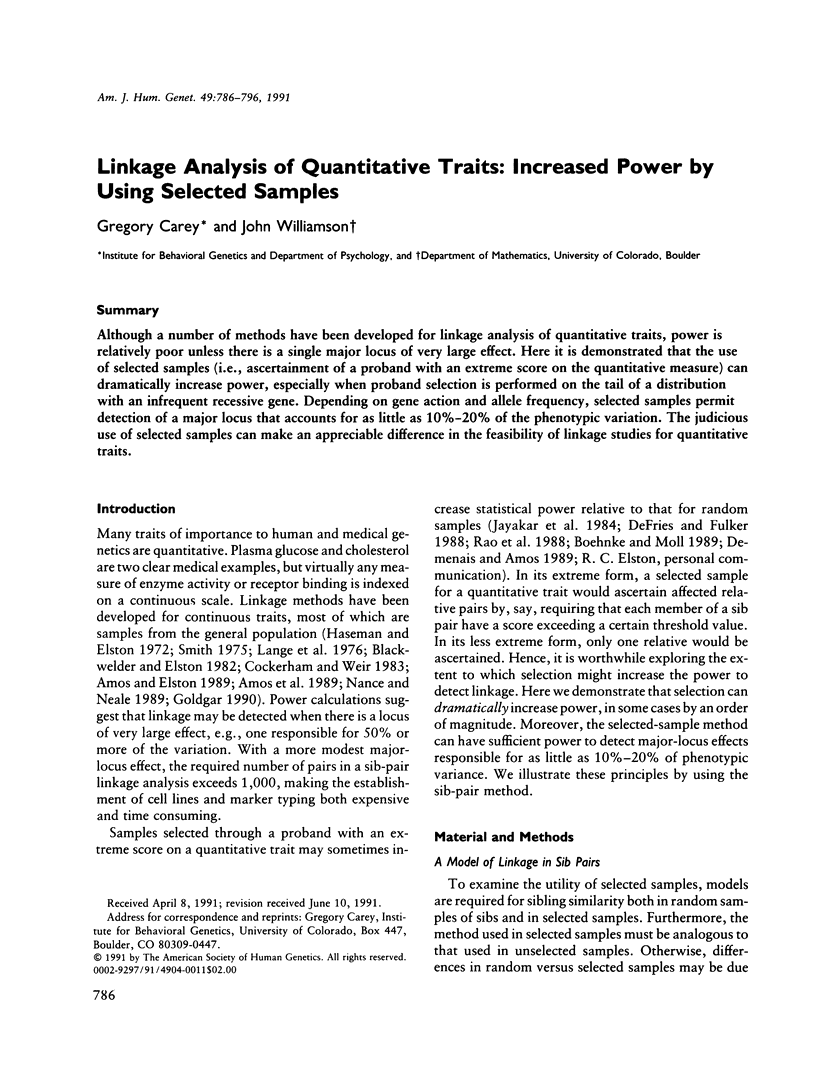
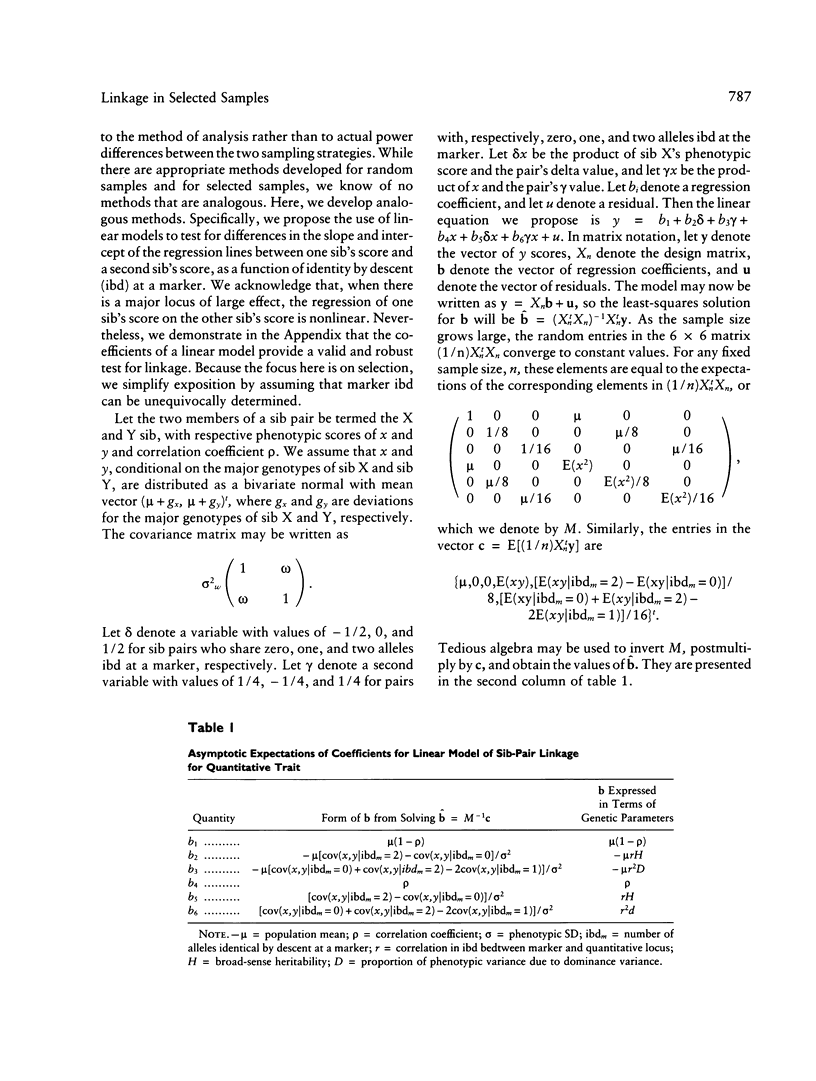
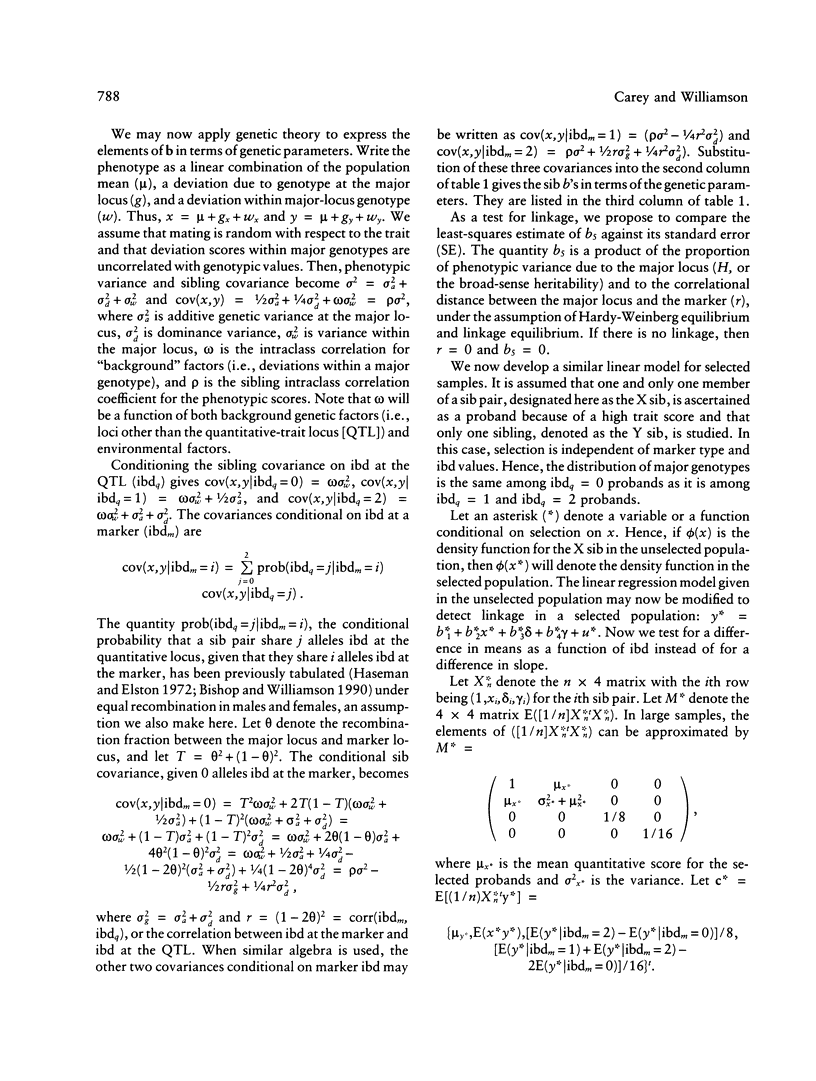

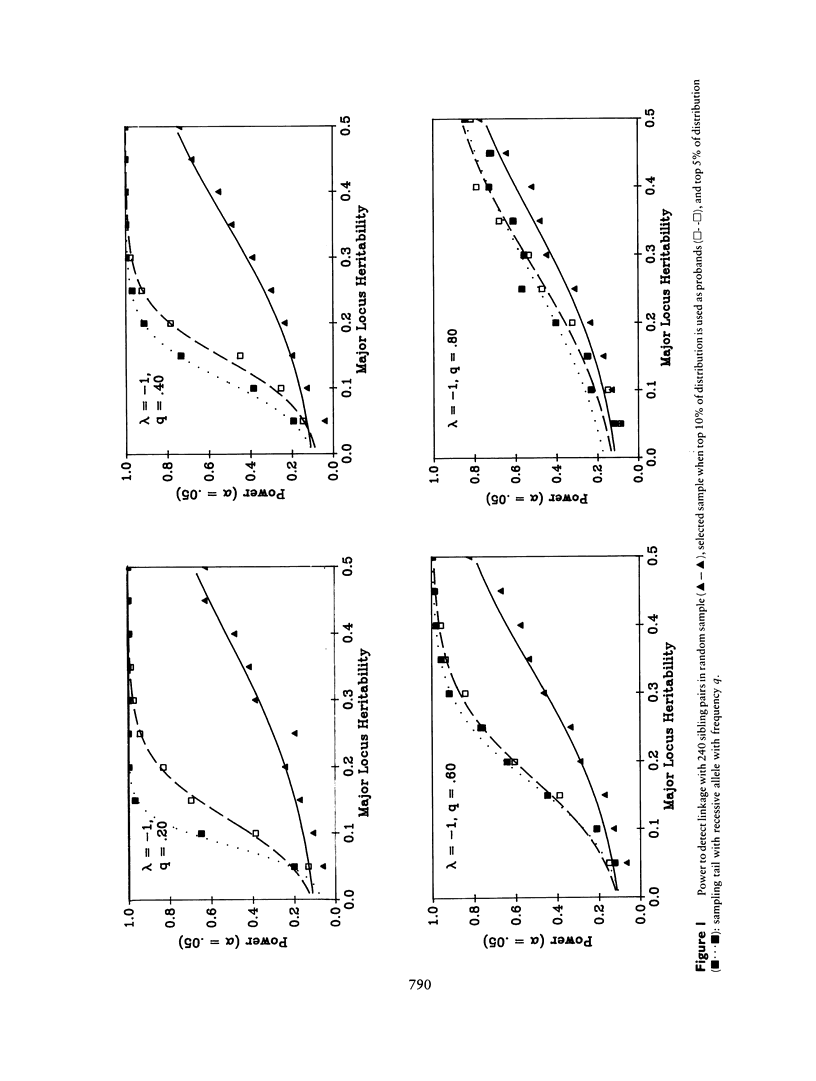

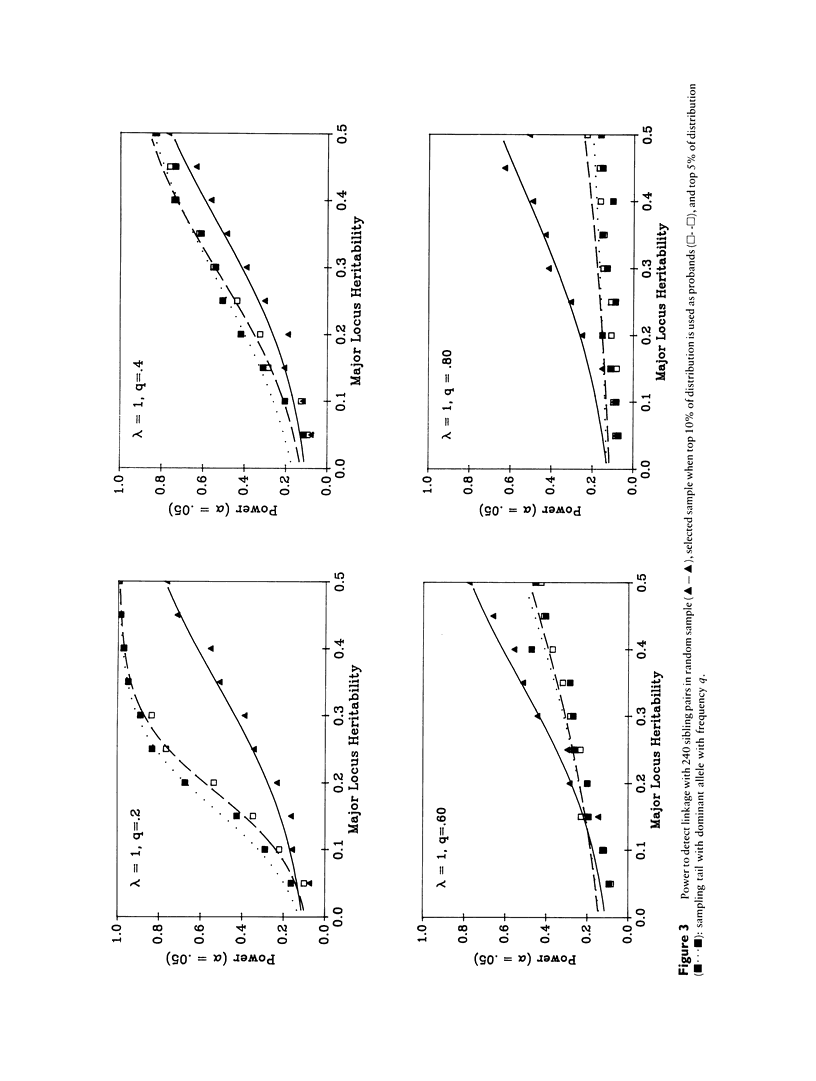
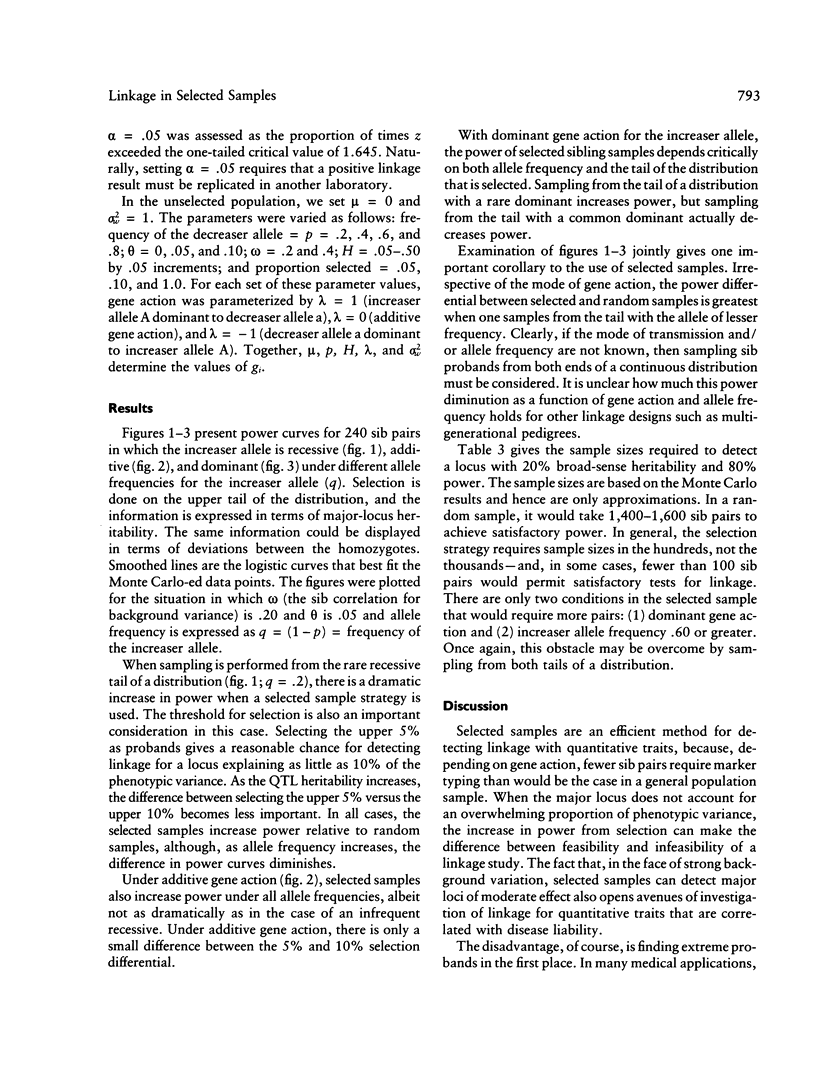
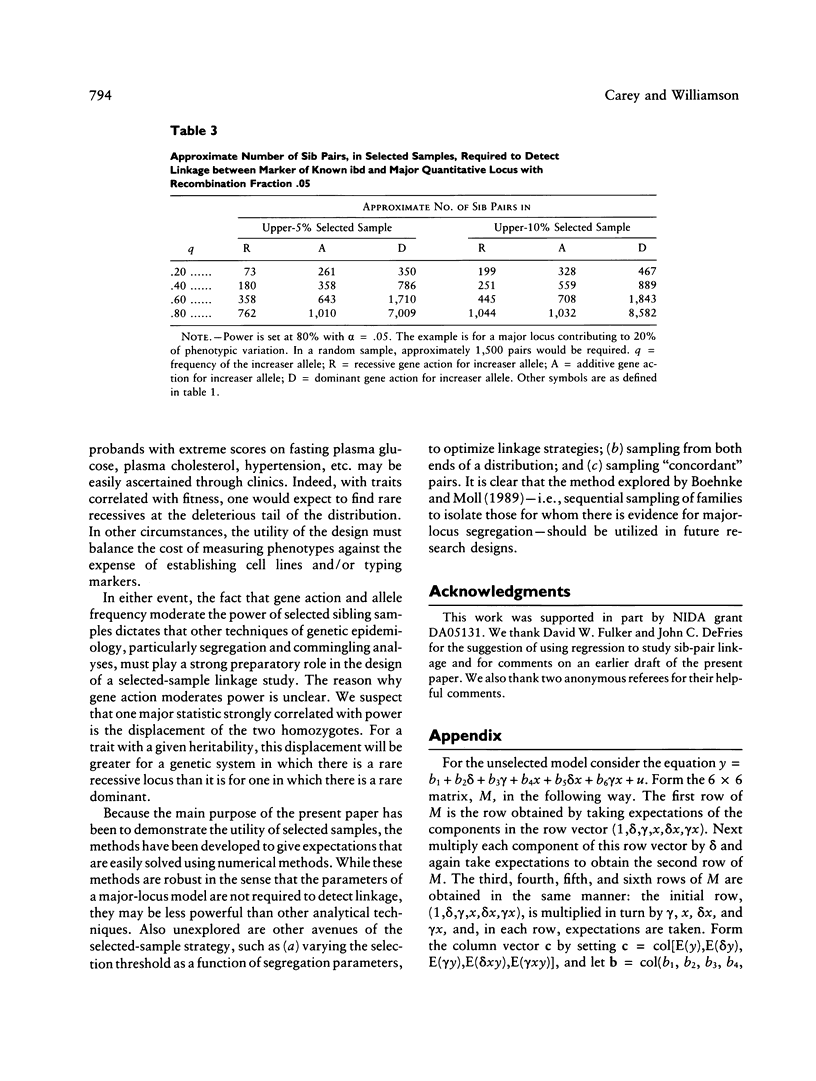
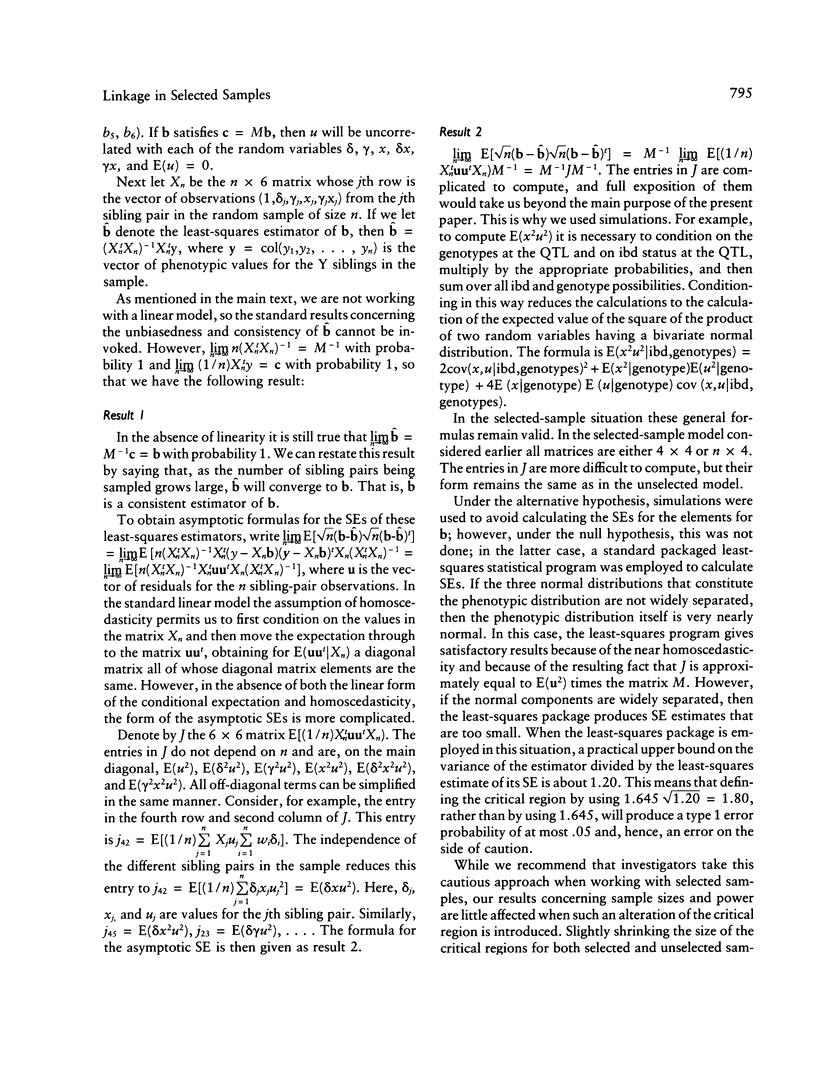
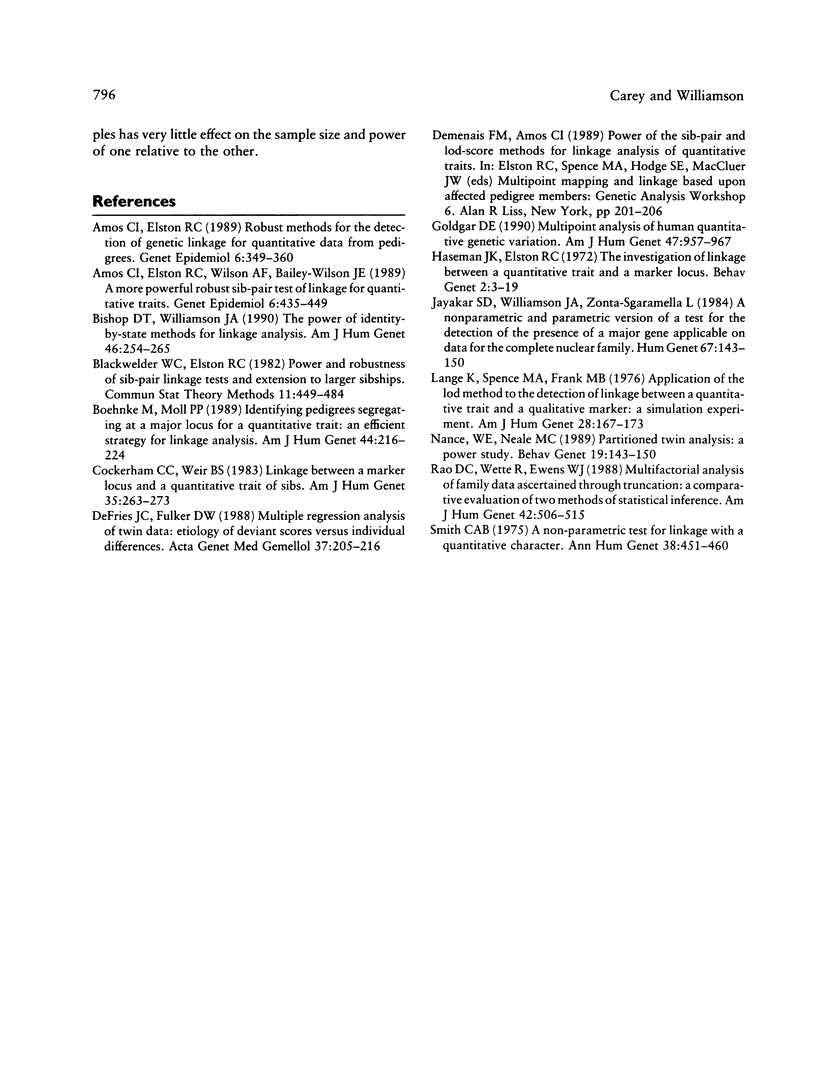
Selected References
These references are in PubMed. This may not be the complete list of references from this article.
- Amos C. I., Elston R. C. Robust methods for the detection of genetic linkage for quantitative data from pedigrees. Genet Epidemiol. 1989;6(2):349–360. doi: 10.1002/gepi.1370060205. [DOI] [PubMed] [Google Scholar]
- Amos C. I., Elston R. C., Wilson A. F., Bailey-Wilson J. E. A more powerful robust sib-pair test of linkage for quantitative traits. Genet Epidemiol. 1989;6(3):435–449. doi: 10.1002/gepi.1370060306. [DOI] [PubMed] [Google Scholar]
- Bishop D. T., Williamson J. A. The power of identity-by-state methods for linkage analysis. Am J Hum Genet. 1990 Feb;46(2):254–265. [PMC free article] [PubMed] [Google Scholar]
- Boehnke M., Moll P. P. Identifying pedigrees segregating at a major locus for a quantitative trait: an efficient strategy for linkage analysis. Am J Hum Genet. 1989 Feb;44(2):216–224. [PMC free article] [PubMed] [Google Scholar]
- Cockerham C. C., Weir B. S. Linkage between a marker locus and a quantitative trait of sibs. Am J Hum Genet. 1983 Mar;35(2):263–273. [PMC free article] [PubMed] [Google Scholar]
- DeFries J. C., Fulker D. W. Multiple regression analysis of twin data: etiology of deviant scores versus individual differences. Acta Genet Med Gemellol (Roma) 1988;37(3-4):205–216. doi: 10.1017/s0001566000003810. [DOI] [PubMed] [Google Scholar]
- Goldgar D. E. Multipoint analysis of human quantitative genetic variation. Am J Hum Genet. 1990 Dec;47(6):957–967. [PMC free article] [PubMed] [Google Scholar]
- Haseman J. K., Elston R. C. The investigation of linkage between a quantitative trait and a marker locus. Behav Genet. 1972 Mar;2(1):3–19. doi: 10.1007/BF01066731. [DOI] [PubMed] [Google Scholar]
- Jayakar S. D., Williamson J. A., Zonta-Sgaramella L. A nonparametric and a parametric version of a test for the detection of the presence of a major gene applicable on data for the complete nuclear family. Hum Genet. 1984;67(2):143–150. doi: 10.1007/BF00272989. [DOI] [PubMed] [Google Scholar]
- Lange K., Spence M. A., Frank M. B. Application of the lod method to the detection of linkage between a quantitative trait and a qualitative marker: a simulation experiment. Am J Hum Genet. 1976 Mar;28(2):167–173. [PMC free article] [PubMed] [Google Scholar]
- Nance W. E., Neale M. C. Partitioned twin analysis: a power study. Behav Genet. 1989 Jan;19(1):143–150. doi: 10.1007/BF01065889. [DOI] [PubMed] [Google Scholar]
- Rao D. C., Wette R., Ewens W. J. Multifactorial analysis of family data ascertained through truncation: a comparative evaluation of two methods of statistical inference. Am J Hum Genet. 1988 Mar;42(3):506–515. [PMC free article] [PubMed] [Google Scholar]
- Smith C. A. A non-parametric test for linkage with a quantitative character. Ann Hum Genet. 1975 May;38(4):451–460. doi: 10.1111/j.1469-1809.1975.tb00634.x. [DOI] [PubMed] [Google Scholar]


